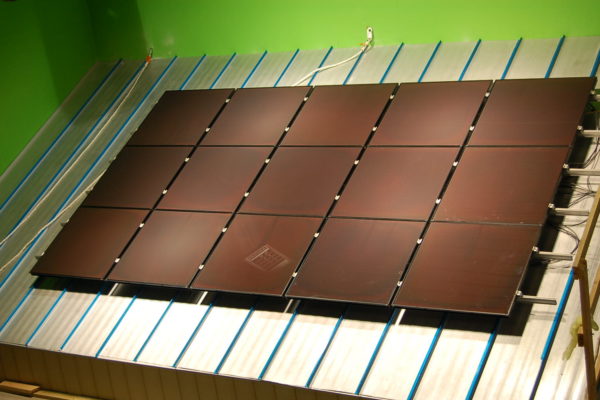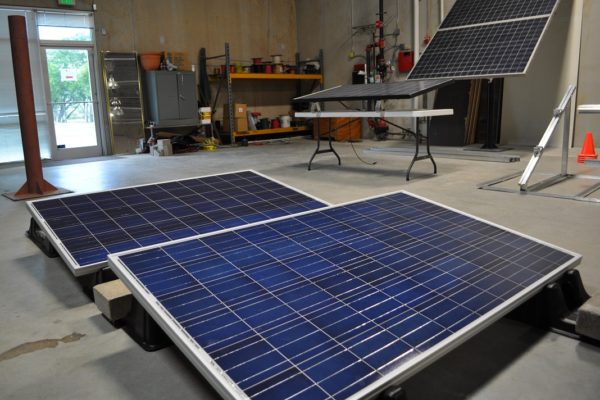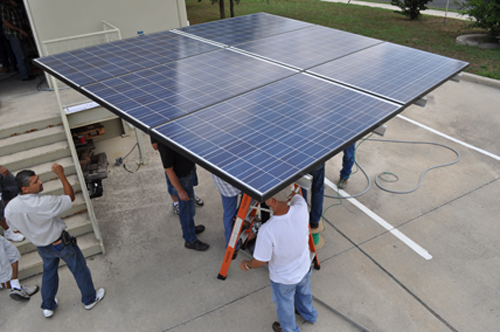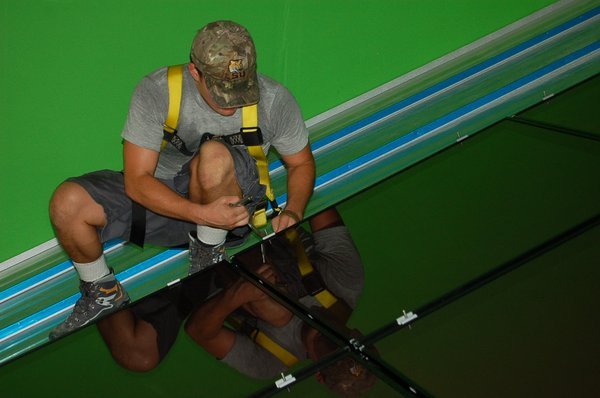Austin Electrical Training Alliance and ImagineSolar
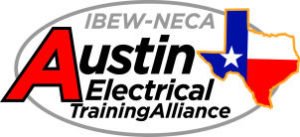 The Austin Electrical Training Alliance (AustinETA, formally, the AEJATC) and ImagineSolar entered into a solar training partnership in 2010 that was approved and audited by the U.S. Department of Labor. As part of that solar training partnership, they maintain and operate an up-to-date Regional Solar Training Lab and can create custom training programs for companies and their employees that complement both the UL and the NABCEP certifications. This document details the capabilities of the Regional Solar Training Lab facility which is located in Austin Texas.
The Austin Electrical Training Alliance (AustinETA, formally, the AEJATC) and ImagineSolar entered into a solar training partnership in 2010 that was approved and audited by the U.S. Department of Labor. As part of that solar training partnership, they maintain and operate an up-to-date Regional Solar Training Lab and can create custom training programs for companies and their employees that complement both the UL and the NABCEP certifications. This document details the capabilities of the Regional Solar Training Lab facility which is located in Austin Texas.
There are a variety of technologies and system configurations used for residential, commercial, and utility-scale projects. We have a continuously updated solar training program that has added innovative, leading-edge equipment to the lab including microinverters, lithium ion batteries, string inverter with DC optimizers and PERC solar modules.
ImagineSolar conducts the following labs to complement our solar classroom instruction and online courses:
Site Evaluation Lab
Technologies: Solar Pathfinder, Solmetric SunEye, Performance Analysis Software;
Learning Objectives:
- Use site evaluation tools and techniques to perform solar resource analysis;
- Learn how to identify and account for shade obstructions;
- Learn how to optimize array design for location-specific considerations;
- Use performance analysis software and solar resource data to create an energy production model for various types and sizes of PV arrays;
Battery-Based Microinverter Lab
Technologies: Enphase Energy microinverters with lithium ion batteries and the companion commissioning application and Internet monitoring system;
Learning Objectives:
- Explain the differences between traditional PV systems and microinverter & AC module technologies and the advantages of module-level power-electronics;
- Understand proper design, installation, commissioning, and troubleshooting procedures for microinverter systems with batteries;
- Understand how to use the Enphase Energy online PV system design software;
- Understand the different operating profiles for battery-based microinverter systems;
- Understand how to setup and use the smart phone commissioning application;
- Setup the Internet system monitoring technology for microinverter systems;
String Inverter with DC Power Optimizers Lab
Technologies: SolarEdge DC-to-DC power optimizers, SolarEdge inverter, 72-cell Mission Solar Energy 360W PV modules, and the companion Internet monitoring system;
Learning Objectives:
- Explain the differences between traditional string inverter PV systems and PV systems that use module-level power electronics;
- Understand proper design, installation, commissioning, and troubleshooting procedures for string inverter with DC power optimizers systems;
- Conduct proper mounting and wiring of PV modules with DC optimizers for a PV array;
- Conduct proper mounting and wiring of disconnects and circuit combiners;
- Conduct proper wiring of the DC side for a grid-tied PV inverter;
- Conduct proper wiring of the AC side for a grid-tied PV inverter to a PV meter and AC disconnect;
- Conduct proper load-side interconnection to the grid through a service panel;
- Conduct final checkout and commissioning of a PV system;
- Connect and use the Internet system monitoring option for SolarEdge PV systems;
- Understand how to use the SolarEdge online PV system design software;
PV Array Mounting Labs: Residential, Commercial, and Utility-Scale
Technologies:
- Rail-based mounting systems for shingle and metal roofs;
- Rail-less mounting systems for residential roofs;
- Ground mounting systems for utility-scale solar projects;
- Flat-roof ballasted mounting systems for commercial projects;
Learning Objectives:
- Gain hands-on experience overall with various roof-mount and ground mounting technologies;
- Understand various grounding systems and certifications (e.g., UL 2703, integrated bonding);
- Conduct proper grounding and bonding (e.g., integrated grounding, bonding washers, lugs)
- Understand mechanical design considerations such as wind and snow loading;
- Conduct proper flashing and waterproofing of penetrations for shingle roofs;
- Conduct proper wire management in a neat and workmanlike manner;
- Conduct proper installation of bonding and bonding jumpers;
- Be able to evaluate the relative advantages of different mounting methods;
Off-Grid Battery-Based Lab
Technologies: Solar Modules, 12VDC battery bank, Charge Controller, 1kW Inverter;
Learning Objectives:
- Learn how to utilize PV charge controllers to charge and manage battery banks;
- Learn about the different types and applications of different batteries;
- Learn about proper battery maintenance and installation;
- Learn how to size off-grid battery banks, arrays, charge controllers, and inverters;
Advanced Hybrid Bi-Modal Micro-Grid Lab
Technologies: SMA Sunny Boy, SMA Sunny Island, Propane Gas Generator, Deep-Cycle Batteries, Solar Modules;
Learning Objectives:
- Conduct the installation of a hybrid multi-modal battery-based PV system with multiple sources of power: solar, battery bank, grid, and generator;
- Understand the differences between DC-coupled and AC-coupled multi-modal PV systems;
- Conduct the programming and commissioning of a complex multi-modal PV system;
Tools for the Solar Professional
There are a variety of tools used by solar professionals including meters, equipment, charts, tables, spreadsheets, calculators and software. Training is provided on the following:
Meters and Equipment used During Solar Labs
- Solmetric SunEye, Solar Pathfinder;
- Compass, Inclinometer;
- Irradiance Meter, Non-Contact Temperature Probe;
- Digital Multimeter DMM, Clamp-On Digital Multimeter Meter;
- Autoranging Digital Megohmmeter;
- Watt-Hour Meter (Kill-a-Watt), Megohm Meter;
- Torque wrenches and torque screwdrivers;
- Personal Protection Safety Equipment including Fall Protection Harnesses;
Charts, Tables, Excel Spreadsheets used for Design Exercises
- Sun Path Charts;
- Solar Radiance/Insolation Tables;
- NEC Tables;
- PV System Sizing Worksheets;
- PV System Financial Analysis;
Software, Online Calculators and Analysis Tools used for Design Exercises
- NREL’s PVWatts® Performance Calculator for Grid-Connected PV Systems;
- NREL’s System Advisor Model (SAM) for on-grid and battery-based PV Systems;
- Solar Pathfinder Assistant Software;
- Solmetric SunEye Software;
- Various design calculators for PV mounting systems;
- Various design tools for string inverter, string inverter with DC optimizers, and microinverter systems;


